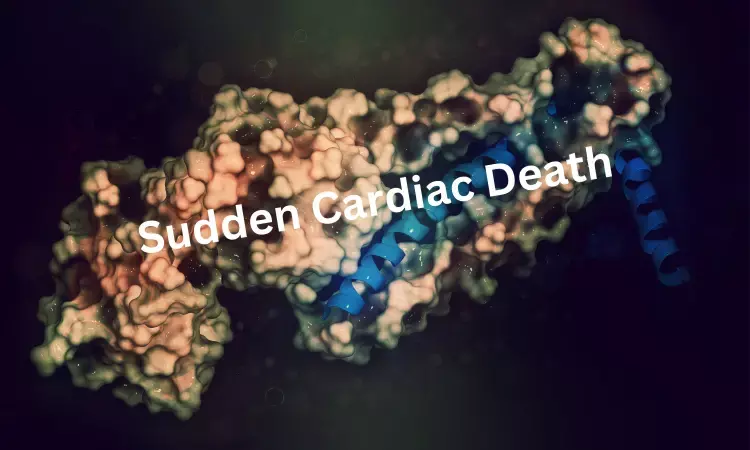- Home
- Medical news & Guidelines
- Anesthesiology
- Cardiology and CTVS
- Critical Care
- Dentistry
- Dermatology
- Diabetes and Endocrinology
- ENT
- Gastroenterology
- Medicine
- Nephrology
- Neurology
- Obstretics-Gynaecology
- Oncology
- Ophthalmology
- Orthopaedics
- Pediatrics-Neonatology
- Psychiatry
- Pulmonology
- Radiology
- Surgery
- Urology
- Laboratory Medicine
- Diet
- Nursing
- Paramedical
- Physiotherapy
- Health news
- Fact Check
- Bone Health Fact Check
- Brain Health Fact Check
- Cancer Related Fact Check
- Child Care Fact Check
- Dental and oral health fact check
- Diabetes and metabolic health fact check
- Diet and Nutrition Fact Check
- Eye and ENT Care Fact Check
- Fitness fact check
- Gut health fact check
- Heart health fact check
- Kidney health fact check
- Medical education fact check
- Men's health fact check
- Respiratory fact check
- Skin and hair care fact check
- Vaccine and Immunization fact check
- Women's health fact check
- AYUSH
- State News
- Andaman and Nicobar Islands
- Andhra Pradesh
- Arunachal Pradesh
- Assam
- Bihar
- Chandigarh
- Chattisgarh
- Dadra and Nagar Haveli
- Daman and Diu
- Delhi
- Goa
- Gujarat
- Haryana
- Himachal Pradesh
- Jammu & Kashmir
- Jharkhand
- Karnataka
- Kerala
- Ladakh
- Lakshadweep
- Madhya Pradesh
- Maharashtra
- Manipur
- Meghalaya
- Mizoram
- Nagaland
- Odisha
- Puducherry
- Punjab
- Rajasthan
- Sikkim
- Tamil Nadu
- Telangana
- Tripura
- Uttar Pradesh
- Uttrakhand
- West Bengal
- Medical Education
- Industry
Sphingolipids with acetylated palmitic acid are associated with increased risk of sudden cardiac death

Sudden cardiac death (SCD) is a growing concern and sphingolipids, including ceramides and sphingomyelins, is known to influence the pathophysiology and risk of sudden cardiac death (SCD) through multiple biological activities.
Bioactive sphingolipids constitute a family of lipids, including sphingosine, ceramide, sphingosine-1-phosphate (S1P) and ceramide-1-phosphate. These molecules act on distinct protein targets, including kinases, phosphatases, lipases and other enzymes and membrane receptors, and they exert distinct cellular functions.
Sphingolipids with palmitic acid was associated with increased risk of SCD, whereas those containing very-long-chain saturated fatty acids are not. In the cohort study it was found that out of 215 SCD events in older people of 65 years , plasma ceramides and sphingomyelins with palmitic acid were associated with 34% and 37% higher SCD risk, respectively, per higher SD of log plasma levels according to a study in JAMA Network.
Researchers designed a cohort study, multivariable Cox proportional hazards regression models were used to examine the association of sphingolipid species with SCD risk. The study population included 4612 participants in the Cardiovascular Health Study followed up prospectively for a median of 10.2 (IQR, 5.5-11.6) years. Eight plasma sphingolipid species (4 ceramides and 4 sphingomyelins) with saturated fatty acids of 16, 20, 22, and 24 carbons were particularly looked. Association of plasma ceramides and sphingomyelins with saturated fatty acids of different lengths with SCD risk was evaluated.
The key findings of the study are
• Out of 4612 study participants included in the analysis 2724 [59.1%] women; 6 [0.1%] American Indian; 4 [0.1%] Asian; 718 [15.6%] Black; 3869 [83.9%] White, and 15 [0.3%] Other), 215 SCD cases were identified.
• In adjusted Cox proportional hazards regression analyses, plasma ceramides and sphingomyelins with palmitic acid (Cer-16 and SM-16) were associated with higher SCD risk per higher SD of log sphingolipid levels (hazard ratio [HR] for Cer-16 was 1.34 ; HR for SM-16, was 1.37 ).
• Associations did not differ by baseline age, sex, race, or body mass index. No significant association of SCD with sphingolipids with very-long-chain saturated fatty acids was observed after correction for multiple testing (HR for ceramide with arachidic acid, was 1.06.
• HR for ceramide with behenic acid, was 0.92; HR for ceramide with lignoceric acid was, 0.92 ; HR for sphingomyelin with arachidic acid, was 0.83 ; HR for sphingomyelin with behenic was acid 0.84 ; HR for sphingomyelin with lignoceric acid was 0.86.
Researchers concluded that “The findings of this large, population-based cohort study of SCD identified that higher plasma levels of Cer-16 and SM-16 were associated with higher risk of SCD. Future studies are needed to examine the underlying mechanism of these associations.”
Reference: Bockus LB, Jensen PN, Fretts AM, et al. Plasma Ceramides and Sphingomyelins and Sudden Cardiac Death in the Cardiovascular Health Study. JAMA Netw Open. 2023;6(11):e2343854. doi:10.1001/jamanetworkopen.2023.43854.
MSc. Neuroscience
Niveditha Subramani a MSc. Neuroscience (Faculty of Medicine) graduate from University of Madras, Chennai. Ambitious in Neuro research having worked in motor diseases and neuron apoptosis is interested in more of new upcoming research and their advancement in field of medicine. She has an engrossed skill towards writing and her roles at Medical dialogue include Sr. Content writer. Her news covers new discoveries and updates in field of medicine. She can be reached at editorial@medicaldialogues.in
Dr Kamal Kant Kohli-MBBS, DTCD- a chest specialist with more than 30 years of practice and a flair for writing clinical articles, Dr Kamal Kant Kohli joined Medical Dialogues as a Chief Editor of Medical News. Besides writing articles, as an editor, he proofreads and verifies all the medical content published on Medical Dialogues including those coming from journals, studies,medical conferences,guidelines etc. Email: drkohli@medicaldialogues.in. Contact no. 011-43720751


